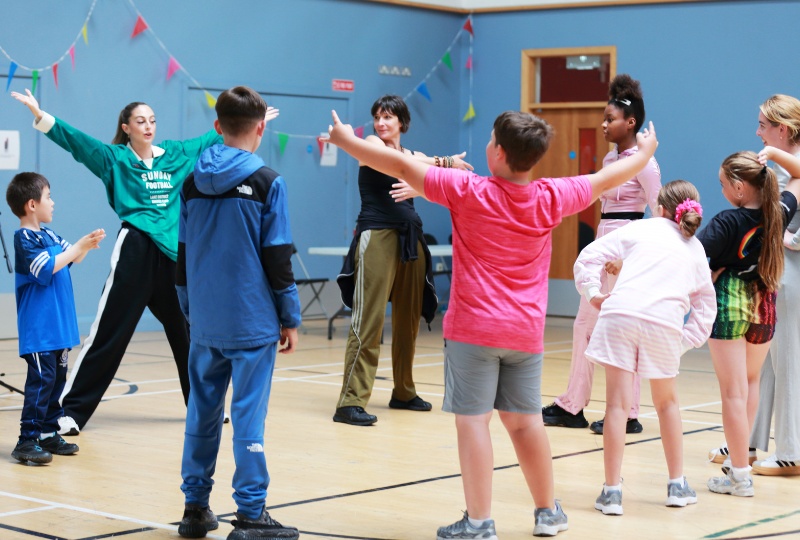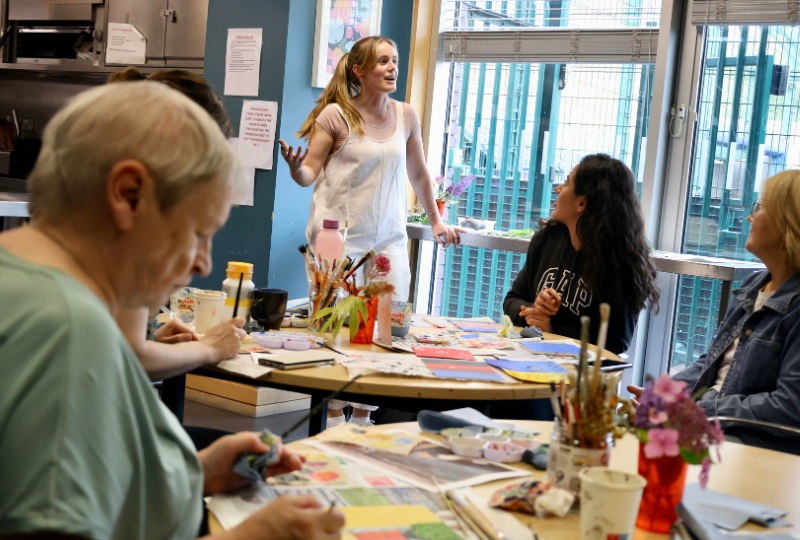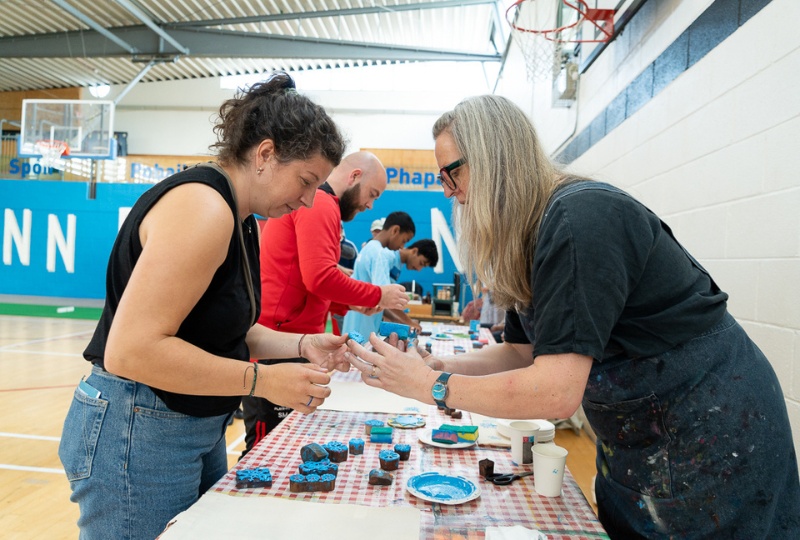Nuacht
How we work | 17 Deireadh Fómhair 2025
How we work: Creative Residences across Dublin city

We create partnerships to try out ideas, test new approaches and add to the cultural story of the city. Creative Residencies encourage makers and experts to pilot new reciprocal partnerships with organisations.
By bringing creative people and organisations together, and by connecting through culture and conversations, we will develop and share new ways of working.
“I had the opportunity to embrace the importance of the sport in my life, be aware of the need of a supportive network to create and to combine it with my current artistic practice, making this relationship with sports way bigger than before, and keep connecting with people through art and movement.”
- Creative Residency artist
From 2021 to 2025 the Culture Company has partnered with Dublin City Council Sports Section to appoint artists in residence to work across Dublin City in sports settings including Ballybough, Dublin 3; Bluebell, Dublin 12; Poppintree, Dublin 11; Irishtown, Dublin 4; North Inner-City, Dublin 1; Ballymun, Dublin 11; Clontarf, Dublin 3; Inchicore, Dublin 8; Crumlin, Dublin 12; Walkinstown, Dublin 6w; Drimnagh, Dublin 10 and in the South Inner-City, Dublin 2 with participants from all across Dublin
So far 3,326 people who live and work in Dublin have visited their local sports club or sports and leisure centre to participate in new cultural activities, to try out a new sport or something creative, or to meet people in their local community.
Nine artists have worked usually for about a 12 month period on engagement, creative workshops, and building audiences for both sports and culture in a sports setting.
52 community groups and sports clubs have taken part so far. We conducted 24 group consultations and listening sessions and delivered 281 creative workshops, events and exhibitions. In some of the residencies, people worked with the artists to make new artworks and events to share with their communities.

These have included three permanent artworks and two community celebration events in sports centres, exhibitions in a swimming pool and boxing gym, a theatre piece in a GAA club, a short film made by children learning rhythmic gymnastics, and five mini documentary films.
The residencies to date represent a great collaborative opportunity for our engagement team, project managers, and DCC sports centre managers and sports officers to work together with the appointed artist in residence.
“This is what community is all about - getting together, having a laugh and sharing some fun between old people and young people”
- Participant at Bluebell Community Celebration, Bluebell Recreation Centre.
Together we have created opportunities for people to be involved in their community in different ways, be introduced to use the facilities in their area (even if in a different way) and connected community groups to their local centre and club. Through this partnership we have removed barriers to access for both sport and art, and developed participation in both sport and art for people, for example trying a new sport or cultural activity.
See an example of just one of these residencies - watch our short film to find out how Justine Doswell, a dance and movement artist, worked with individuals, community groups and sports clubs connected with Bluebell Recreation Centre, Dublin 12.
Videos of our other residencies are available on the Culture Company YouTube channel.
The artists so far involved have come from different approaches to art and culture, such as Art Making and Visual artists: Siobhán O’Callaghan, Mark Joyce; Dance and movement: Karen Aguiar, Justine Doswell; Multimedia art: Sharon Kelly, Chinedum Muotto, Aine O’Hara; and Theatre: Timmy Creed.
Our process - How we make Creative Residencies in Sport settings
We work closely with the DCC Sports Section to develop bespoke engagement with communities and projects with artists, both of which can help to address their own goals such as introducing new audiences to sport or arts, increasing participation in culture, activating under-used spaces, creating more diverse opportunities, fostering greater community, or reaching a particular target group.
We met with Sports Officers and Sports Centre Managers or clubs to find out more about sports participation across the city, how the centres are used and existing engagement with local communities. We then issued an Open Call for artists and matched the selected artists with sports clubs or centres.
Within the community locally, we then assigned Engagement Coordinators who facilitated Tea and Chats consultation sessions with users at the centres and local community groups to further develop an understanding of what the community’s needs are, what creative activities people would be interested in or how the centre or club is used at present to see if we can develop more opportunities for cultural participation in places that may not have nearby cultural spaces.

Each artist began their residency by basing themselves in their designated centre or sports club to meet with as many people as possible, inform people about the residency and to invite participation. Each artist ran ‘try it-out’ workshops to test ideas, and then worked regularly with groups and individuals to deliver creative workshops.
“I always thought of here as just doing sports. But this has been wonderful, and different. So it’d be great if it continues - hopefully it does!”
- Creative Residency participant.
We also introduced new visitors to sports centres via Culture Club, our programme of hosted tours and talks that encourage people to connect with the cultural spaces of the city. People interested in trying out a new sport or cultural activity met and participated in groups working with the artist in their local community.
In some residencies, the artists worked with groups and individuals on longer developmental projects to co-create new artworks and events.
From feedback we have learnt that participants feel an increased sense of community within sports clubs and centres from having been involved in these residencies. The partnership has developed participation in both sport and art for people who might normally think ‘It’s not for them’ and in the long-term development of active engagement with sports and cultural infrastructure.
The creative residencies programme is a transferable model that develops cultural activities and engagement in non-arts spaces, and demonstrates how culture is a tool for activity and social engagement and community participation.
